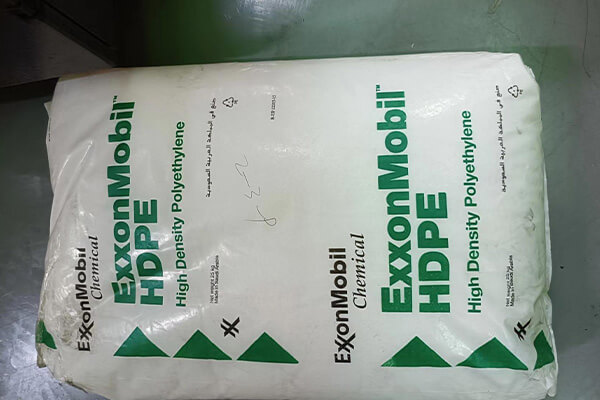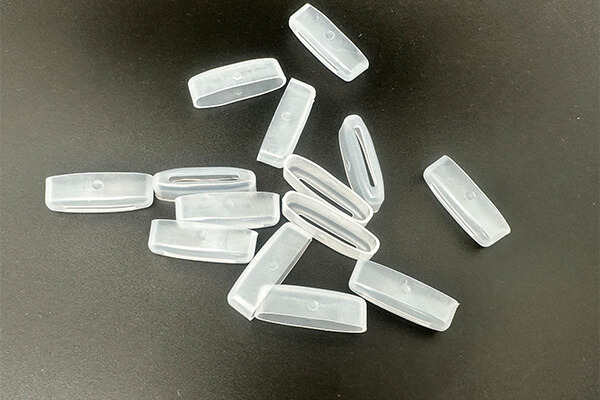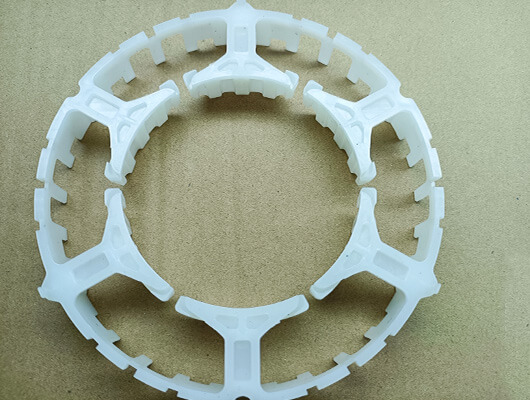HDPE Injection Molding | Custom Parts Service
HDPE injection molding is a manufacturing process that involves injecting molten HDPE material into a customized mold cavity. The molten HDPE material is then cooled and solidified,producing precise and high-quality plastic parts. HDPE injection molding process is known for its cost-effectiveness, speed, and ability to produce complex shapes and designs with high precision and consistency.
What is High-density Polyethylene (HDPE)?
High-density polyethylene (HDPE) is a type of thermoplastic polymer made from the monomer ethylene.It is a versatile material commonly used in the manufacture of a variety of products. HDPE is known for its high strength-to-density ratio, making it lightweight, strong, and durable.HDPE also has excellent chemical and weather resistance, making it suitable for use in severe environments. HDPE is a recyclable material with low environmental impact, making it a popular choice for sustainable manufacturing practices.
What is HDPE Used For?
HDPE is a versatile material that is used in a wide range of applications across various industries. Some common uses of HDPE include:
- 1.Packaging: HDPE is commonly used to produce plastic bottles, containers, and caps due to its durability, chemical resistance, and ability to be easily molded into different shapes and sizes.
- 2.Pipes and fittings: HDPE is widely used in the construction industry for pipes and fittings due to its high strength-to-density ratio, corrosion resistance, and ability to withstand extreme temperatures.
- 3.Automotive parts: HDPE is used in the automotive industry for fuel tanks, interior parts, and bumpers due to its impact resistance, durability, and lightweight properties.
- 4.Medical devices: HDPE is used in the medical industry for surgical trays, implants, and medical devices due to its biocompatibility, chemical resistance, and ability to be easily sterilized.
- 5.Toys and playground equipment: HDPE is used to manufacture toys and playground equipment due to its durability, safety, and ability to withstand outdoor elements.
- 6.Recycling containers: HDPE is used to produce recycling bins and containers due to its recyclability and low environmental impact.
In summary,HDPE’s versatile properties make it a popular choice for a wide range of applications in various industries.
Injection-Molded HDPE Material Properties
HDPE material properties may vary by specific grade and manufacturer. Injection molded HDPE material has some general properties:
- 1.High strength-to-density ratio: HDPE is known for its high strength and low density, making it strong yet lightweight.
- 2.Chemical resistance: HDPE is resistant to most chemicals, making it suitable for use in harsh environments.
- 3.Weather resistance: HDPE is highly resistant to UV radiation and weathering, making it suitable for outdoor use.
- 4.Impact resistance: HDPE can withstand impacts and is highly resistant to cracking or breaking.
- 5.Flexibility: HDPE is flexible and can be easily molded into different shapes and sizes.
- 6.Recyclability: HDPE is recyclable and has a low environmental impact.
Injection molded HDPE is a durable and versatile material with excellent chemical and weather resistance, making it suitable for a wide range of applications across industries.
Characteristics and Applications of Various HDPE Plastics
There are various types of HDPE plastics that are used for different applications, each with their own unique characteristics. Here are some of the most common types of HDPE plastics and their applications:
- HDPE HMW: This is a high-density polyethylene with a density of 0.95 g/cm3 and a very high molecular weight. It is commonly used for sheet extrusion applications such as cutting boards, playground equipment, and marine board due to its excellent wear resistance and durability.
- Marlex 9006: Marlex 9006 is a high-density polyethylene (HDPE) resin with a density of 0.955 g/cm³. It is known for its good stiffness, high impact resistance,food contact acceptable and good environmental stress crack resistance (ESCR). Marlex 9006 is commonly used in injection molding applications such as industrial pails, automotive applications, and foamed parts.
- DOW DMDA-8007 NT 7: DOW DMDA-8007 NT 7 is a high-density polyethylene (HDPE) resin with a density of 0.958 g/cm³. It is known for its narrow molecular weight distribution,designed for excellent stiffness,low warpage and good toughness. DOW DMDA-8007 NT 7 is commonly used in blow molding applications such as molded crates, cases, trays, tote bins, and other objects requiring high rigidity.
- DOW DMDA-8907 NT 7: DOW DMDA-8907 NT 7 is a high-density polyethylene (HDPE) resin with a density of 0.962 g/cm³. It is known for its superb impact strength,terrific environmental stress crack resistance(ESCR),narrow molecular weight distribution and meets rigorous performance characteristics of applications requiring stackability. DOW DMDA-8907 NT 7 is commonly used in extrusion blow molding applications such as industrial parts, and a variety of shipping containers.
In summary, the various types of HDPE plastics have different characteristics that make them suitable for specific applications. HDPE HMW, Marlex 9006, DOW DMDA-8007 NT 7, and DOW DMDA-8907 NT 7 are all high-density polyethylene (HDPE) resins. They are commonly used in injection molding and blow molding applications due to their excellent processability, impact strength, stiffness, toughness, and environmental stress crack resistance (ESCR).
Can HDPE Be Injection Molded?
There is no doubt that HDPE (High-Density Polyethylene) can be injection molded. In fact, injection molding process is one of the most common and widely used methods for manufacturing HDPE products. HDPE is a popular choice for injection molding due to its excellent strength-to-density ratio, chemical resistance, and ability to be molded into complex shapes with high precision and consistency. The process is also cost-effective, efficient, and capable of producing high-volume runs of identical parts. In short, HDPE injection molding is a versatile and efficient manufacturing method that is commonly used to produce a wide range of products, including packaging, automotive parts, medical devices, and more.
Introduction of HDPE Injection Molding
HDPE (High-Density Polyethylene) injection molding is a manufacturing process that involves injecting molten HDPE material into a custom-designed mold cavity. The molten HDPE material is then allowed to cool and solidify, creating a finished plastic part.The process is also efficient, cost-effective, and capable of producing complex shapes and designs with high precision and consistency.HDPE molding offers several advantages over other manufacturing processes, including the ability to produce complex and intricate designs, high production rates, and consistent quality of the finished products. It is commonly used in the production of a wide range of plastic products, including bottles, containers, pipes, automotive parts, medical devices, and more.

Advantages and Disadvantages of HDPE Injection Molding
- Advantages:
HDPE molding offers several advantages over other manufacturing processes. It allows for the production of complex designs and intricate shapes with high precision and consistency. It also offers high production rates and is ideal for large volume production runs. Additionally, HDPE molding is a cost-effective process, as it can reduce material waste and labor costs.
1.Versatility: HDPE is a versatile material that can be molded into various shapes and sizes, making it suitable for a wide range of applications.
2.Strength and durability: HDPE has a high strength-to-density ratio, making it strong, durable, and able to withstand harsh environments.
3.Chemical resistance: HDPE is highly resistant to chemicals, making it suitable for use in corrosive environments. 4.Recyclability: HDPE is recyclable and has a low environmental impact, making it a popular choice for sustainable manufacturing practices.
5.Cost-effective: HDPE injection molding is a cost-effective manufacturing process, allowing for the production of high-volume runs of identical parts.
- Disadvantages:
1.Limited temperature resistance: HDPE has a relatively low temperature resistance compared to other materials, making it unsuitable for high-temperature applications.
2.Limited color options: HDPE is typically only available in a limited range of colors, which may not be suitable for all applications.
3.Difficult to bond: HDPE can be difficult to bond with other materials, which may limit its use in certain applications.
4.Limited mechanical properties: HDPE has limited mechanical properties compared to other materials, such as metals, which may limit its use in certain applications where high mechanical strength is required.
Applications of HDPE Injection Molding
HDPE injection molding has a wide range of applications due to the unique properties of HDPE plastic. Some of the common applications of HDPE injection molding include:
- Automotive industry: HDPE is used in the manufacturing of various automotive components such as fuel tanks, bumpers, and fenders due to its lightweight, impact resistance, and strength.
- Construction: HDPE pipes are widely used in the construction industry due to their excellent chemical resistance, toughness, and flexibility. HDPE is also used in the manufacturing of geosynthetics, which are used in soil stabilization, erosion control, and drainage systems.
- Electrical and electronic components: HDPE is used in the manufacturing of various electrical and electronic components such as cable insulation, switch housings, and connectors due to its excellent insulation properties.
- Medical devices: HDPE is used in the manufacturing of various medical devices such as syringes, vials, and IV bags due to its excellent chemical resistance, biocompatibility, and sterilization capability.
HDPE injection molding is a versatile manufacturing process that can be used to produce a wide range of plastic products with excellent properties and performance.
Best Practices for HDPE Injection Molding
Here are some best practices for HDPE injection molding:
- 1.Proper Drying: HDPE is hygroscopic, which means it can absorb moisture from the atmosphere. Therefore, it is essential to dry the HDPE pellets before injection molding to prevent defects such as porosity, warpage, and reduced mechanical properties. The recommended drying temperature for HDPE is between 80-90°C for 2-4 hours.
- 2.High Injection Speed: HDPE has a high melt viscosity, which means it requires a high injection speed to fill the mold completely. A high injection speed minimizes the chances of voids and air pockets in the finished product.
- 3.High Melt Temperature: HDPE has a high melting point, typically between 220-260°C. Therefore, it is essential to set the melt temperature of the injection molding machine to the recommended temperature range to ensure a consistent melt and minimize defects.
- 4.Adequate Cooling Time: HDPE has a high crystallization rate, which means it solidifies quickly. Therefore, it is essential to provide adequate cooling time to prevent warpage and shrinkage of the finished product.
- 5.Proper Mold Design: The mold design should be optimized for HDPE injection molding to ensure a uniform filling and proper cooling of the part. The mold should have adequate venting to prevent gas traps, and the gate size should be optimized to ensure a uniform flow of molten plastic.
- 6.Consistent Processing Conditions: The processing conditions should be consistent from one cycle to another to ensure a consistent quality of the finished product. The process parameters such as melt temperature, injection speed, and cooling time should be monitored and adjusted as necessary.
By following these best practices, you can achieve high-quality HDPE injection molded parts with consistent properties and performance.
Custom HDPE Plastic Parts Service – Sungplastic
Sungplastic providers that offer custom HDPE plastic parts services. Our company uses HDPE injection molding to produce custom plastic parts according to our customers’ specific requirements.v. Here are some of the steps involved in custom HDPE plastic parts service:
- 1.Design and Engineering: The first step is to design the custom plastic part based on the client’s specific requirements. This involves creating a 3D CAD model of the part and optimizing the design for HDPE injection molding. This step may also involve engineering analysis to ensure the part meets the required performance specifications.
- 2.Mold Design and Fabrication: Once the design is finalized, a mold is designed and fabricated based on the 3D CAD model. The mold is typically made of steel and is designed to withstand the high pressures and temperatures involved in the HDPE injection molding process.
- 3.Injection Molding: The HDPE plastic pellets are melted and injected into the mold cavity using a specialized injection molding machine. The molten plastic is then allowed to cool and solidify, forming the desired shape of the finished part.
- 4.Finishing: Once the part is removed from the mold, it may require additional finishing operations such as trimming, drilling, or machining. This step is typically done to remove any excess material or to achieve the required surface finish.
- 5.Quality Control: The finished part is inspected to ensure it meets the required specifications and quality standards. This step may involve visual inspection, dimensional inspection, or functional testing.
Custom HDPE plastic parts service providers typically work closely with our clients throughout the entire process to ensure the finished part meets their specific requirements. We provide additional services such as material selection, design optimization and prototyping to help customers achieve the best results.
Importance of Selecting the Right Plastic Injection Molding Partner for HDPE Projects
Selecting the right plastic injection molding partner is crucial for HDPE projects for several reasons:
- 1.Experience and Expertise: An experienced and knowledgeable injection molding partner will have the expertise to optimize the design, mold, and manufacturing process for HDPE injection molding. They will also have the knowledge to select the right HDPE material grade, processing conditions, and quality control standards to ensure the best results.
- 2.Quality and Consistency: An experienced injection molding partner will have the necessary quality control processes in place to ensure the consistent quality of the finished parts. This is particularly important for HDPE projects, where even small variations in processing conditions can affect the quality and performance of the finished part.
- 3.Cost and Time-to-Market: An experienced injection molding partner will have the expertise to optimize the manufacturing process for HDPE injection molding, which can result in lower production costs and faster time-to-market. They may also have the necessary resources and equipment to handle large volume production runs, which can further reduce costs and lead times.
- 4.Communication and Collaboration: An experienced injection molding partner will have effective communication and collaboration processes in place to work closely with their clients throughout the entire process. This can result in a better understanding of the client’s requirements, improved design and engineering, and better quality control processes.
An experienced and knowledgeable partner can help optimize the manufacturing process, reduce costs, improve quality, and accelerate time-to-market, resulting in a better outcome for the client.
Your Trusted HDPE Injection Mould Manufacturer
Sungplastic is a reputable manufacturer of high-density polyethylene (HDPE) injection molds and provides comprehensive HDPE injection molding services. Our experienced team of engineers and technicians work closely with our customers to understand their unique needs and provide solutions tailored to meet their specific requirements. We use cutting-edge technology and equipment to design and produce high-quality HDPE injection molds, consistently delivering reliable results. In addition to mold production, we also offer POM injection molding services that include the production of finished POM products such as gears, bearings, and other precision components. Our wide range of injection molded parts caters to various industries. At Sungplastic, we prioritize providing the highest quality products and services. We have strict quality control measures in place to ensure that every product leaving our facility meets the highest industry standards. Furthermore, we offer competitive pricing, guaranteeing our clients the best value for their investment. As your trusted partner for injection molding needs, Sungplastic is committed to excellence and customer satisfaction.
FAQ About HDPE Injection Molding
- Q: What are the challenges of HDPE injection molding?
- Q: What are the types of HDPE molding?
- Q: How to choose the right HDPE molding technique for a specific project?
A: Challenges of HDPE injection molding include the hygroscopic nature of HDPE, the high melt viscosity of HDPE, and the high crystallization rate of HDPE.
A: The most common types of HDPE molding include injection molding, blow molding, and rotational molding. Each process is used to create different types of products with unique shapes, sizes, and properties.
A: Choosing the right HDPE molding technique depends on several factors, such as the shape, size, and complexity of the product, the required production volume, the material properties, and the cost.
About Sungplastic
Sungplastic is a plastic product manufacturer with rich experience in injection molding. According to the different product development requirements, we flexibly adjust the manufacturing process to achieve high quality, high efficiency and more economical.
We offer a variety of manufacturing services: Rapid Prototyping, Tool Making, Injection Molding, Product Design and Development, CNC Machining and Metal Stamping. You can choose from a variety of plastics, silicone rubber, or metal for your product. Regardless of mass production or small batch customization, Sungplastic has always been committed to providing assured, efficient and more economical one-stop processing services for your projects.
Contact us for a free quote and project review.
Get a free quote and design analysis today.
We’ll reply you within 6 working hours. We respect your privacy.



